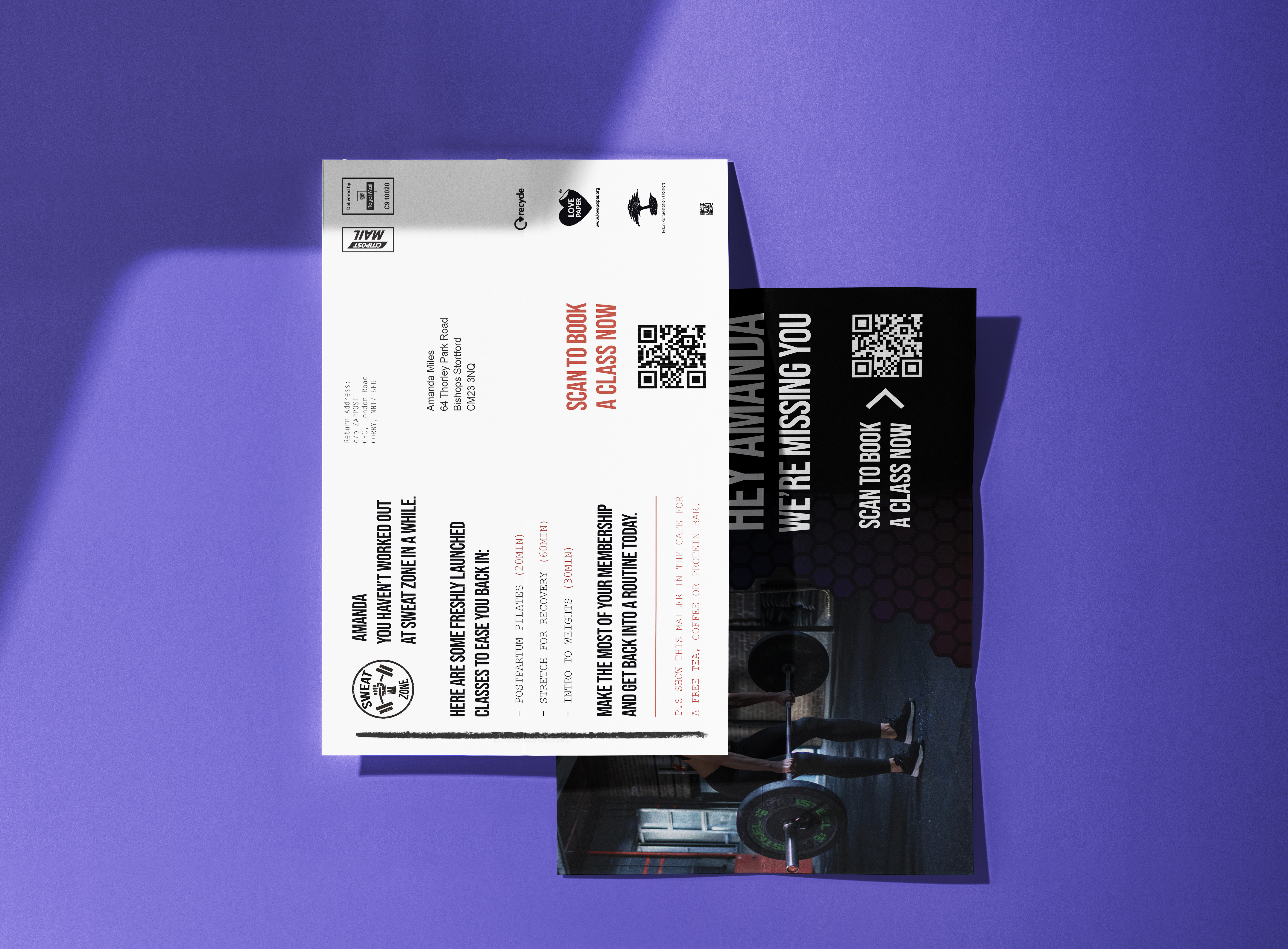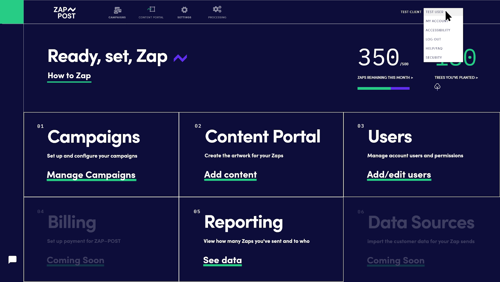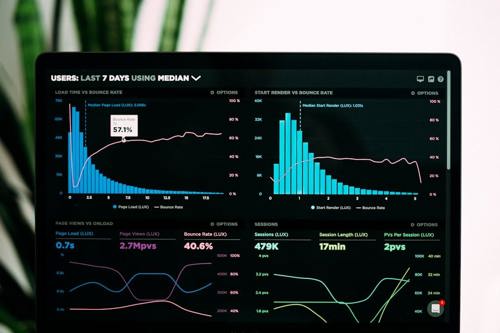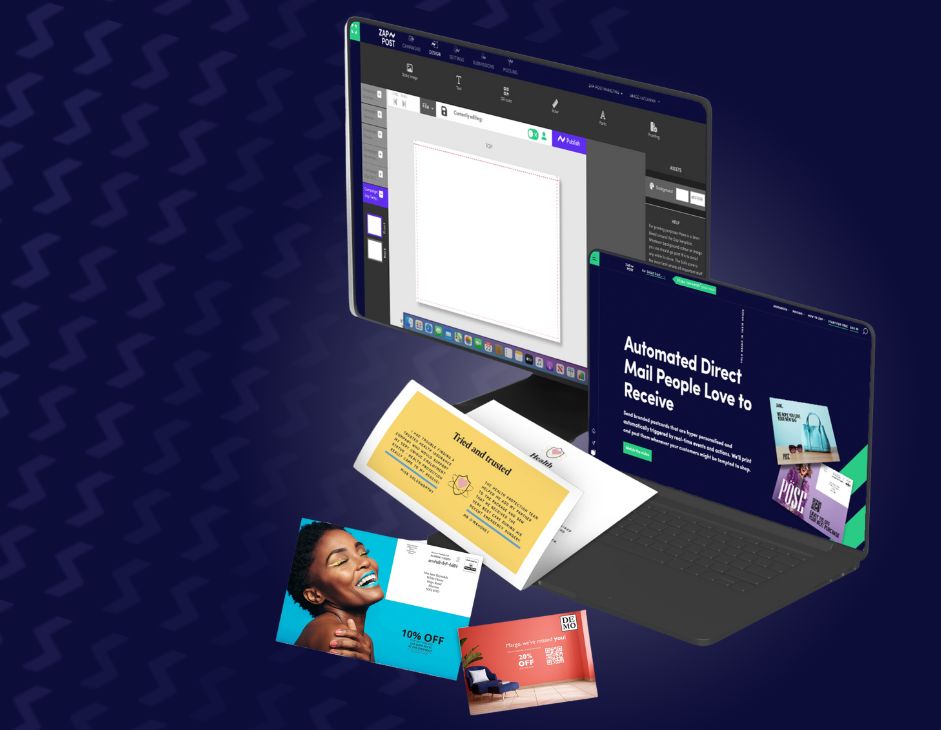Phygital Marketing: Email and Programmatic Direct Mailing Omnichannel Strategy
Phygital Marketing: Email and Programmatic Direct Mailing Omnichannel Strategy
Effective omnichannel marketing integrates physical Direct Mailing and email marketing combined. This integrated approach enhances customer engagement and helps brands maintain trust, loyalty, and retention.

Effective omnichannel marketing integrates physical Direct Mailing and email marketing combined. This integrated approach enhances customer engagement and helps brands maintain trust, loyalty, and retention.
In the ever-shifting world of marketing, staying ahead of the curve is crucial.
The rise of digital technology has transformed the way businesses interact with their customers.
Much of the focus today is within this realm. But, the physical world and "offline triggers" hold significant value in the customer journey.
In fact, they're often undervalued.
This is where the concept of 'phygital' marketing comes into play. It's a blend of physical and digital marketing strategies, creating a seamless customer experience across all touchpoints.
In this article, we delve into the integration of email marketing and programmatic Direct Mailing into an omnichannel marketing strategy.
We'll explore how these elements can work together to enhance customer engagement, boost brand loyalty, and drive business growth.

Understanding Phygital Marketing in the Omnichannel Realm
Phygital marketing is a hybrid approach that combines the best of both physical and digital marketing.
It aims to create a cohesive, interactive, and personalised experience for customers, regardless of the channel they choose to engage with a brand.
In the context of an omnichannel marketing strategy, phygital marketing plays a pivotal role.
It bridges the gap between the online and offline worlds, ensuring a strong united front for customers as they move between digital and physical touchpoints.
This combination is key to delivering a superior customer experience and fostering long-term brand loyalty.
The Role of Email Marketing in Omnichannel Strategies
Email marketing is typically one of the most common mediums included within omnichannel marketing strategies with Direct Mail today. Though it's more competitive and challenging than it was ten years ago, it still works.
It allows brands to reach customers directly, delivering immediate personalised content straight to their inboxes.
Moreover, it provides an opportunity for brands to nurture relationships with their customers, fostering loyalty and encouraging repeat business. It's a cheap and efficient method, and it still proves to be a valuable means of reaching customers.
“85% of consumers prefer a blend of digital and physical marketing channels.”
Personalisation and Segmentation in Email Campaigns
As savvy marketers know, personalisation matters in email marketing. It helps to speak to customers personally. But, using first names barely scratches the surface when it comes to reaching through to customers. We certainly know this in the Direct Mail marketing community too. Messaging, interests, and experiences also matter.
By tailoring content to individual customer preferences and behaviours, brands can increase engagement and conversion rates.
Segmentation, on the other hand, allows brands to group customers based on shared characteristics, ensuring the right message reaches the right audience. It works the same in Direct Mail marketing, where segmentation and personalisation make marketing more poignant based on consumer interests and actions.
In conjunction with Direct Mail business postcards and physical marketing letters, both email and physical mail offer the same type of approach that cuts through the noise.
Measuring Email Marketing Success
The success of email marketing is measured through various metrics such as CRM data and Google Analytics.
These include open rates, click-through rates, and conversion rates, which provide insights into customer engagement and campaign effectiveness.
Taking a daily approach to evaluating these numbers is key to improving marketing efforts for messaging and timing. It works along the same lines as measuring analytics for Direct Mail.
Direct Mail Analytics | Measuring Physical Mail Advertising Campaigns
Today, QR code technology has revolutionised the way we measure the effectiveness of Direct Mail campaigns. By incorporating QR codes into physical mail, brands bridge the gap between offline and online marketing tactics. When a customer scans a QR code they are immediately directed to a website, landing page, or social media channel, allowing marketers to track this data in real-time.
These interactions can also be analysed through Google Analytics, providing insights into customer behaviour, conversion rates, and overall campaign performance. This data-driven approach enables businesses to fine-tune their strategies, ensuring that each Direct Mail campaign is more targeted and effective than ever before.
With ZAPPOST's innovative Direct Mail solution, we take analytics a step further by integrating campaign results directly into the ZAP app dashboard. Users can easily monitor their Direct Mail performance in real time, accessing detailed metrics such as scan rates, user demographics, and geographical data. This centralised dashboard simplifies the process of evaluating the success of each campaign, offering a comprehensive view of how physical mail drives online interactions and conversions. By leveraging these insights, businesses make informed decisions, optimise their marketing efforts, and ultimately achieve a higher return on investment.

Direct Mailing: The Programmatic Mail Approach
Direct mailing is most definitely not a thing of the past.
In fact, it's making a comeback in the digital age, thanks to programmatic mail.
This approach combines the tangibility of physical mail with the precision of digital targeting, creating a unique customer experience. From Business postcards and Direct Mail letters, the physicality engages in a different and complementary way to email.
This is where trust comes into play.
Anyone anywhere in the world can send an email. However, how many of those have the means to send physical mail? It requires more attention to detail, time and dedication to do so. It's more of a white-glove experience, leaving a wow factor.
This is why many consumers say receiving Direct Mail makes them feel more important (trust). Even during COVID-19 times, reports indicated that receiving Direct Mail from a brand comforted them. It just feels more personal.
"50% of consumers say that Direct Mail feels more important than email communication from a brand."
Integrating Direct Mail with Digital Data
The power of programmatic mail lies in its integration with digital data. Using your CRM you can personalise your physical mailers as well as segment your audience for various ZAP app Direct Mail campaigns. Today technology allows triggered Direct Mail to be sent as easily as email.
By leveraging customer data, brands can send personalised Direct Mail to customers based on their online behaviour. Just like email, Direct Mail works the same way. Customers can be marketed in various ways.
Common Direct Mail Campaign Segments include:
1) Welcome new customers
2) Reward VIPs
3) Abandoned baskets
4) Wishlist reminders
5) Lapsed customers
6) Price alerts & seasonal sales
7) Win back campaigns
8) New product launches
9) Events
10) Bespoke campaigns
Direct Mail campaigns such as these create a lot of traction between the digital and physical worlds, enhancing the overall customer marketing experience, and compounding results.
Crafting a Cohesive Message Across Channels
With a sound omnichannel strategy, consistency will lead to an increase in visitors and conversions. As many marketers are aware, the rule of seven applies. That is potential customers need to interact with a brand's message seven times on average (at a minimum) before they engage and take action.
On top of that, the message conveyed through Direct Mail should align with that of other channels, creating a unified brand narrative.
This not only strengthens brand identity but also reinforces the message in the customer's mind, increasing the likelihood of conversion.

When brands struggle to craft cohesive messages across various channels, it undermines the effectiveness of campaigns, creating mixed signals and confusion.
For example, if your brand promotes sustainability in email campaigns but focuses solely on low prices in Direct Mail campaigns, customers will be unsure of the brand's priorities. Customers have an affinity with brand values, so understand what you're saying and make it stick.
Creating a Seamless Customer Phygital Marketing Experience
Creating a seamless phygital customer experience is at the heart of omnichannel marketing. This involves integrating digital and physical touchpoints to provide a consistent and reliable customer journey.
By doing so, brands will engage customers in multiple ways, enhancing their overall experience and fostering brand loyalty. Imagine a customer browsing their favourite brand's website and within days they get a well-timed email. Then a few days later a
beautifully designed Business postcard or letter arrives in their postbox. It could be a general outreach or segmented outreach approach highlighting products they were perusing, or a sale they were interested in.
(AC Video on Phygital marketing Figaro)
Using online and offline interactions, brands create highly targeted marketing messages. Multiple avenues for customer engagement allow brands to stay agile and top of mind. Just as an email can direct customers to a sale or related product purchase offering, QR codes on physical mail do the same thing. QR codes minimise customer friction to getting online, which is why so many brands rely on them today. It drives results. See our customer impact stories here.
The Importance of Consistent Branding
Consistent branding across all channels is a cornerstone for any omnichannel marketing strategy.
It not only strengthens brand identity but also creates a familiar and reliable image in the customer's mind, enhancing trust and loyalty.
When customers encounter a consistent brand message and visual identity across email campaigns, Direct Mail, Social media, it reinforces the perception of the brand. This cohesion creates a memorable experience, reducing confusion and ensuring each touchpoint contributes to a unified narrative.
For example, using the same colour schemes, logos, tone of voice, and offers. Regardless of the platform digital and physical communications assures your customers are engaging with the same brand, regardless of the platform.
Leveraging Data Analytics for Enhanced Engagement with Direct Mail & Email
Data analytics plays is pivotal in enhancing customer engagement. By analysing customer data and trends, brands gain insights into customer behaviour and preferences, enabling them to tailor their omnichannel marketing efforts accordingly.
This not only improves customer interactions, but also boosts conversion rates and ROI. It's important that each email campaign in conjunction with Direct Mail campaigns are measured and evaluated. Only then can a business truly make educated decisions and gain clarity from sales and retention numbers. It also promotes more educated calculations when forecasting future sales numbers.

Best Practices for Phygital Marketing Campaigns
Implementing a successful phygital marketing campaign requires a strategic approach.
It's essential to understand your marketing goals. Knowing what you want to accomplish (i.e. Boost sales, Brand awareness, etc.) is key. The most successful brands know what they want to do first, then create campaigns accordingly.
Secondly, after campaigns are sent, it is good practice to evolve your marketing with testing.
A/B Testing in Phygital Marketing
A/B testing is a powerful tool in phygital marketing.
By testing different versions of your email or Direct Mail campaigns, you can identify what resonates best with your audience and optimise your strategy accordingly.
Great brands understand A/B testing and use various tactics to analyse, reconfigure, and ensure the results to drive the effectiveness of campaigns moving forward.
The same approach should be taken with Direct Mailers and those campaigns can be analysed in the same way.
(ZAP Postcard picture)
The Future of Phygital Marketing: Trends to Watch
The future of phygital marketing is promising, with several trends on the horizon.
Artificial intelligence
One such trend is the increased use of artificial intelligence (AI) to optimise the timing, content, and delivery. This will ensure messages are sent when they are most likely to be effective, with automated design sequences, reducing in-house efforts and increasing efficiency within any business organisation.
At the moment, integrated platforms help muti-channel campaigns easier to trigger. For example, we already print and post, however, moving forward the level of automation will only increase. For example, more website interactions will be followed up with a Direct Mail piece within 24 hours without any need for human intervention (through API connectors and web hooks). From scrolling one page to the other on a website, to email and social media interactions, Direct Mail and email sync will only get better in the omnichannel space.
The Internet of Things (IoT)
Another trend to watch is the integration of the Internet of Things into marketing strategies. This can provide valuable data and insights, further enhancing the effectiveness of phygital campaigns.
IoT devices collect vast amounts of data about consumer behaviour, preferences, patterns. Marketing departments can leverage this data to create highly personalised campaigns that resonate with recipients. For example, a smart fridge might track a consumer's grocery consumption and share this data with retailers. Logically, the retailer could follow up with Direct Mailer offers for frequently purchased items or suggest new products based on consumption patterns. As this is already possible, the amount of devices being synced will only increase within various sectors - from smart devices to transportation to shopping, TV/media and more. And the automation factor is what will significantly boost sales, relevance and timing.
Overcoming Challenges in Omnichannel Marketing
Implementing an omnichannel marketing strategy is not without its challenges. One common hurdle is the organisation and integration of various marketing channels and systems.
However, with the right tools and strategies, such as a robust customer data platform (CDP) and a well-trained team, these challenges can be overcome. This allows an omnichannel approach to function like a well-oiled machine.
For a full list of ZAP~POST Direct Mail integrations check Partners and Integrations
Ensure you have the right platforms to correctly organise and automate your marketing endeavours. Should you have any questions about our partners and integrations, contact us.
(confirm all are correct above)
Conclusion: The Integrated Approach to Customer Engagement with Direct Mail & Email
In conclusion, an effective omnichannel marketing strategy integrates programmatic physical Direct Mailing and email marketing. This integrated approach enhances customer engagement and helps brands maintain trust, loyalty, and retention.
By leveraging data analytics and personalisation, businesses will create a compelling customer experience across all touchpoints - standing out from the competition.
Want to get your Direct Mail campaign started? Start designing your Direct Mail postcard or Business Letter now. Contact us if you have any questions.
Popular Posts
Unlock the latest insights
Get all the crucial industry news, tips for your next campaign & info on our latest tech releases delivered straight to your inbox.


